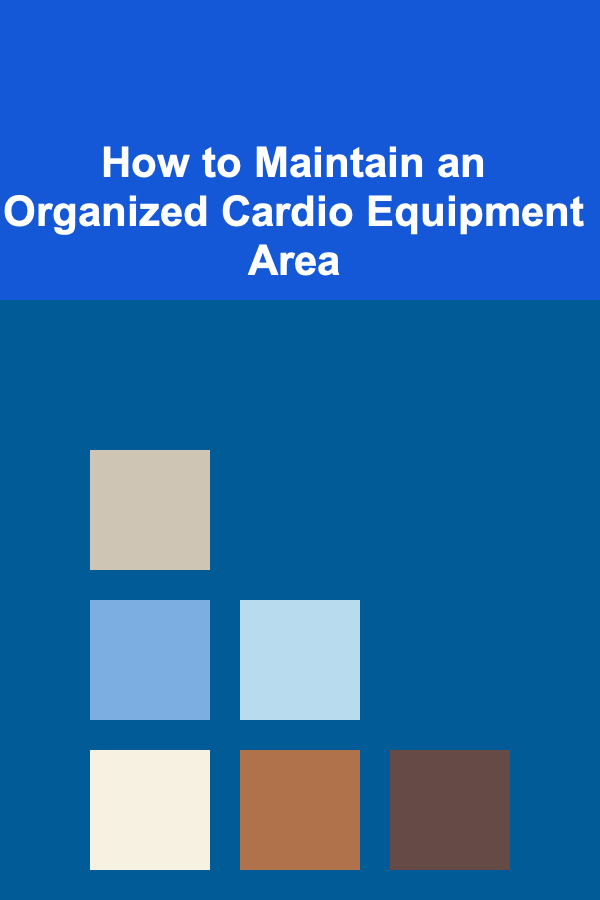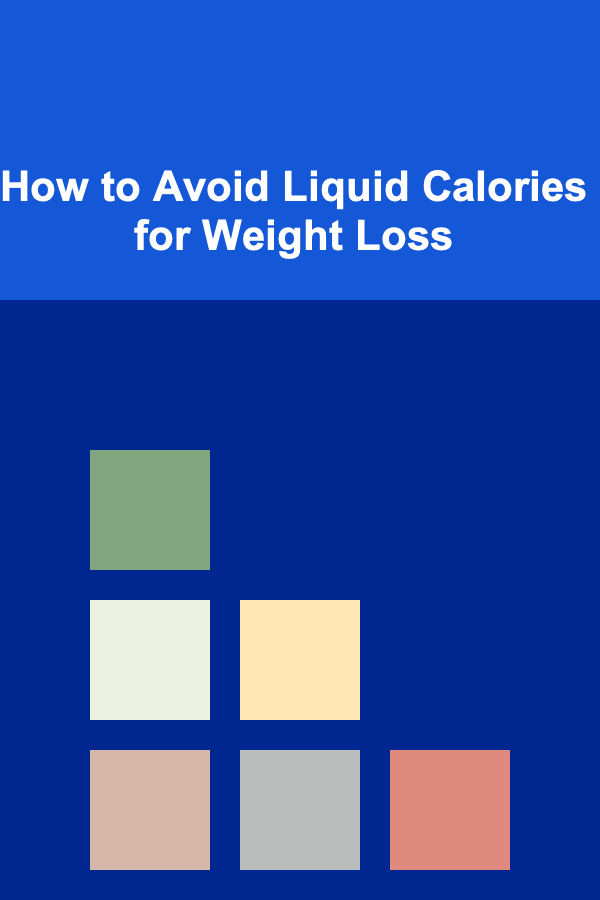
How to Optimize Your Content for SEO to Boost Visibility: A Detailed Guide
ebook include PDF & Audio bundle (Micro Guide)
$12.99$8.99
Limited Time Offer! Order within the next:

Search Engine Optimization (SEO) is crucial for anyone looking to enhance their online presence and reach a broader audience. Whether you are a blogger, marketer, or business owner, SEO can help you improve your visibility in search engines like Google, driving organic traffic to your website and increasing your chances of conversion. However, SEO isn't just about adding keywords to your content; it's a comprehensive process that involves strategic planning, quality content creation, and technical optimization.
In this actionable guide, we'll dive deep into the strategies and tactics you can use to optimize your content for SEO, boosting your visibility and ensuring that your website stands out in search engine results pages (SERPs).
Understand Your Target Audience and Search Intent
Before you even think about optimizing content, it's critical to understand your target audience and what they are searching for. SEO isn't just about ranking for random keywords; it's about providing value to the user and answering their queries. This is where search intent comes into play.
Actionable Steps:
- Conduct Audience Research: Use tools like Google Analytics, social media insights, and customer surveys to understand who your audience is, their pain points, and what they need.
- Analyze Search Intent : There are four types of search intent: informational, navigational, transactional, and commercial investigation. Make sure the content you create aligns with the intent behind the keywords you are targeting. For example:
- Informational Intent: Users are looking for answers to questions (e.g., "How to bake a cake").
- Navigational Intent: Users are trying to find a specific website (e.g., "Facebook login").
- Transactional Intent: Users are ready to make a purchase (e.g., "buy running shoes online").
- Commercial Investigation: Users are comparing products or services (e.g., "best laptops under $1000").
By understanding these nuances, you can tailor your content to meet specific user needs, ensuring that you not only rank higher but also provide the right value.
Conduct Thorough Keyword Research
Keywords are the foundation of SEO. If you want to optimize your content, you need to know what keywords your target audience is searching for. Keyword research allows you to discover the terms and phrases people use in search engines, which you can then incorporate into your content.
Actionable Steps:
- Use Keyword Research Tools: Tools like Google Keyword Planner, SEMrush, Ahrefs, and Ubersuggest can help you identify high-volume, low-competition keywords that are relevant to your content.
- Focus on Long-Tail Keywords: Long-tail keywords (keywords that are more specific and typically longer than shorter ones) are often less competitive and can yield better results. For example, instead of targeting "digital marketing," focus on "best digital marketing strategies for small businesses."
- Analyze Competitor Keywords: Use competitor analysis to see what keywords are driving traffic to their websites. This can give you ideas for optimizing your own content.
Example:
If you're writing an article about "healthy eating," instead of just using the broad keyword "healthy eating," try incorporating more specific long-tail keywords like "healthy eating tips for busy professionals" or "quick healthy eating recipes for weight loss."
Create High-Quality, Engaging Content
Once you know what keywords to target, the next step is to create high-quality content that meets the needs of your audience. Search engines prioritize content that is useful, informative, and well-written. High-quality content not only helps you rank better but also keeps users on your page longer, reducing bounce rates and improving user engagement metrics.
Actionable Steps:
- Write for Your Audience, Not Search Engines: While SEO is important, you should never sacrifice the quality of your writing for the sake of keyword optimization. Write content that is valuable, informative, and engaging.
- Incorporate Keywords Naturally: Instead of stuffing your content with keywords, use them naturally within the context. Include keywords in key places like the title, headings, and throughout the body of the content.
- Use Multimedia: Text-based content can be enhanced with images, videos, infographics, and interactive elements. These not only enrich the user experience but also contribute to better SEO, as Google values content that keeps users engaged.
- Focus on Content Length: Longer content tends to perform better in SEO rankings. Aim for comprehensive, in-depth articles that provide real value to the reader. Research suggests that the ideal blog post length is around 1,500-2,500 words, depending on the topic.
Example:
A post about "digital marketing strategies" could be improved by adding case studies, relevant images, charts, or even a video explaining each strategy in more detail. This increases time on page and improves the likelihood of ranking higher.
Optimize Your Title Tags and Meta Descriptions
Title tags and meta descriptions are essential on-page SEO elements that help search engines understand what your page is about. These elements also influence click-through rates (CTR) from search results, which is another important factor for SEO success.
Actionable Steps:
- Craft Engaging Title Tags: Your title tag should be compelling, contain the target keyword, and be under 60 characters long (so it's not cut off in search results). Make sure it accurately reflects the content of the page.
- Write Concise Meta Descriptions: Meta descriptions appear below the title in search results. Although they don't directly impact rankings, a well-written meta description can increase CTR. Keep meta descriptions between 150-160 characters and make them enticing and relevant to your content.
Example:
For a page on "how to start a blog," an optimized title tag might be: "How to Start a Blog in 2025 -- A Step-by-Step Guide for Beginners," and the meta description could read: "Learn how to create and launch your own blog in 2025 with our easy-to-follow guide. Perfect for beginners!"
Use Header Tags for Structure and Readability
Using header tags (H1, H2, H3, etc.) not only helps to organize your content but also improves SEO by signaling to search engines the structure of your content. Header tags also make your content more readable for users, improving engagement and reducing bounce rates.
Actionable Steps:
- Use H1 for the Main Title: The H1 tag should be reserved for the main title of your page and should include your primary keyword.
- Utilize H2 and H3 for Subheadings: Break your content into sections using H2 and H3 tags. This makes it easier for both search engines and readers to navigate your content.
- Incorporate Keywords in Headers: While headers should be readable and engaging, it's also important to include relevant keywords in them to improve SEO.
Example:
If you're writing a post on "SEO best practices," use H2 tags for sections like "Keyword Research," "On-Page SEO," and "Off-Page SEO." This structure makes it easier for both users and search engines to understand your content.
Optimize Images and Use Alt Text
Images play a crucial role in making your content visually appealing and engaging. However, they also need to be optimized for SEO, especially since search engines can't "see" images like humans do. Optimizing your images helps them rank in Google Image Search and improves page load times, which is a ranking factor.
Actionable Steps:
- Compress Image File Sizes: Large images can slow down your website, negatively impacting SEO. Use tools like TinyPNG or ImageOptim to reduce file sizes without compromising quality.
- Use Descriptive Alt Text: Alt text describes the content of an image for search engines and visually impaired users. Always include relevant keywords in your alt text while keeping it descriptive and natural.
- Use Proper Image Formats: JPEGs are great for photographs, while PNGs are better for images with transparency. WebP is a new format that combines high quality with smaller file sizes, making it an excellent choice for fast-loading sites.
Example:
If you're using an image of a person cooking, the alt text could read: "healthy eating tips for busy professionals -- quick and nutritious recipes." This helps the image rank for keywords related to your content.
Improve Page Speed and Mobile Optimization
Page speed and mobile optimization are crucial factors for SEO. Google places significant emphasis on user experience, and slow-loading pages or non-mobile-friendly websites are penalized in rankings.
Actionable Steps:
- Test Your Page Speed: Use tools like Google PageSpeed Insights or GTmetrix to analyze your website's speed. Follow the suggestions provided to improve load times.
- Optimize for Mobile: Ensure your website is mobile-friendly by using responsive design. With more than half of all web traffic coming from mobile devices, this is critical for both SEO and user experience.
- Minimize JavaScript and CSS: Excessive use of JavaScript and CSS can slow down your website. Minimize and defer these files to improve load times.
Example:
If you have an e-commerce website, optimize images and reduce the number of scripts running on product pages to improve load times, which can positively impact both conversions and SEO rankings.
Build High-Quality Backlinks
Backlinks (links from other websites pointing to your content) are a significant ranking factor for SEO. High-quality backlinks signal to search engines that your content is trustworthy and authoritative.
Actionable Steps:
- Focus on Quality, Not Quantity: A few backlinks from reputable, high-authority websites are far more valuable than numerous low-quality links.
- Guest Post and Collaborate: Reach out to industry blogs or publications and offer guest posts or collaborative content in exchange for a backlink.
- Promote Your Content: Share your content on social media, email newsletters, and forums to increase the likelihood of it being linked back to by others.
Example:
If you write a comprehensive guide on "SEO strategies for beginners," reach out to established SEO blogs and ask if they would feature your article as a resource, providing a backlink in return.
Conclusion
SEO is an ongoing process that requires attention to detail and a strategy that aligns with your audience's needs and search intent. By following the actionable steps outlined in this guide, you can optimize your content for search engines and boost your visibility in SERPs. Remember, the key to success lies in creating valuable, high-quality content that resonates with your audience, while also adhering to SEO best practices. With persistence and the right strategies, your content can rank higher, attract more traffic, and ultimately drive business growth.
Reading More From Our Other Websites
- [Home Family Activity 101] How to Host a Fun Scavenger Hunt for Your Family
- [Home Space Saving 101] How to Organize a Sewing Table with Storage for Small Craft Spaces
- [Polymer Clay Modeling Tip 101] How to Sculpt Polymer Clay Insects with Anatomical Accuracy
- [Organization Tip 101] How to Organize Books and Magazines in Your Family Room
- [Organization Tip 101] How to Store Cooking Tools for Easy Access
- [Stamp Making Tip 101] DIY Fun: Easy Homemade Stamps Kids Can Create in Minutes
- [Home Storage Solution 101] How to Achieve Closet Organization: Tips for Maximizing Storage Space
- [Home Budget 101] How to Save Money on Grocery Shopping
- [Personal Care Tips 101] How to Use a Hair Mask for Post-Sun Hair Care
- [Hiking with Kids Tip 101] Best Beginner Trails for Kids Ages 3‑5: A Parent's Guide to Safe Exploration

10 Frugal Gift-Wrapping Ideas That Will Wow Without Breaking the Bank
Read More
How to Maintain an Organized Cardio Equipment Area
Read More
How to Design a Home That Reflects Your Personality
Read More
How to Avoid Liquid Calories for Weight Loss
Read More
10 Tips for Yearly Garden Maintenance: A Seasonal Checklist
Read More
10 Tips for Planning Twitch Stream Overlays and Graphics
Read MoreOther Products

10 Frugal Gift-Wrapping Ideas That Will Wow Without Breaking the Bank
Read More
How to Maintain an Organized Cardio Equipment Area
Read More
How to Design a Home That Reflects Your Personality
Read More
How to Avoid Liquid Calories for Weight Loss
Read More
10 Tips for Yearly Garden Maintenance: A Seasonal Checklist
Read More